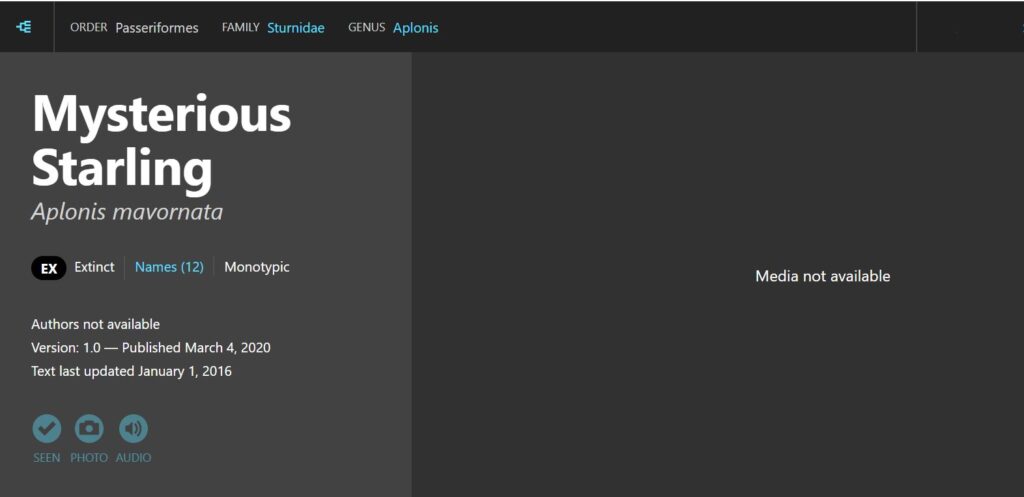
3 March 2021
Why is this starling all black?
The European starlings (Sturnus vulgaris) we love to hate in North America are just one of 128 species in the Starling family (Sturnidae). In Europe their English name is “common starling.” Here are seven of their uncommon looking relatives.
Spotless starling (Sturnis unicolor): The common starling’s nearest relative is a non-migratory resident of Spain, Portugal, northwest Africa, and nearby areas. Shown above, he is indeed spotless.
Rosy starling (Pastor roseus): Looks uncommon to us but is common in India in winter.

Violet-backed starling (Cinnyricinclus leucogaster): Native to sub-Saharan Africa, the male is beautiful amethyst, the female is boring brown.

Superb starling (Lamprotornis superbus): Lives in Africa. Definitely superb. Imagine seeing more than one!


Greater blue-eared starling (Lamprotornis chalybaeus): A very common bird of open woodlands in the Sahel and the eastern half of Africa.

Hildebrandt’s starling (Lamprotornis hildebrandti): Lives in Kenya and Tanzania. Oh my!

Mysterious starling (Aplonis mavornata): There is no photo of the mysterious starling because cameras had barely been invented when he was found in Polynesia in 1825. Ornithologists went looking for him in 1975 but he was already extinct. Due to the mystery of his origin, there are probably two extinct species of mysterious starlings. Read more here.

Our European starlings certainly look common compared to these.
(photos from Wikimedia Commons; click on the captions to see the originals)
Beautiful colors. Thanks
Unrelated to the above post, my 6-year-old daughter asked me this morning about the “mystery bird” presumed to be a scarlet tanager x rose-breasted grosbeak that you posted about in June 2020. Did the DNA tests ever confirm the true identity of this bird? Thanks!
Ta da! Here it is from Steve Gosser as of 21 Feb 2021.
“After all this time we finally know the identity of the mystery bird I found at McConnells Mills back on 6/6/2020!! It is a hybrid!! As far as anyone knows it’s the first hybrid of these two species that has ever been documented.
Here is what Bob Mulvihill wrote moments ago:
The genetic identity of this remarkable bird has just (2/22/21) been confirmed as:
(female parent) grosbeak X (male parent) tanager!! Steve Gosser’s amazing discovery of the “Scarlet Gosserbeak” will be official as soon as we finish writing up all the scientific details–stay tuned!”
Beautiful birds. Never heard of any of them!